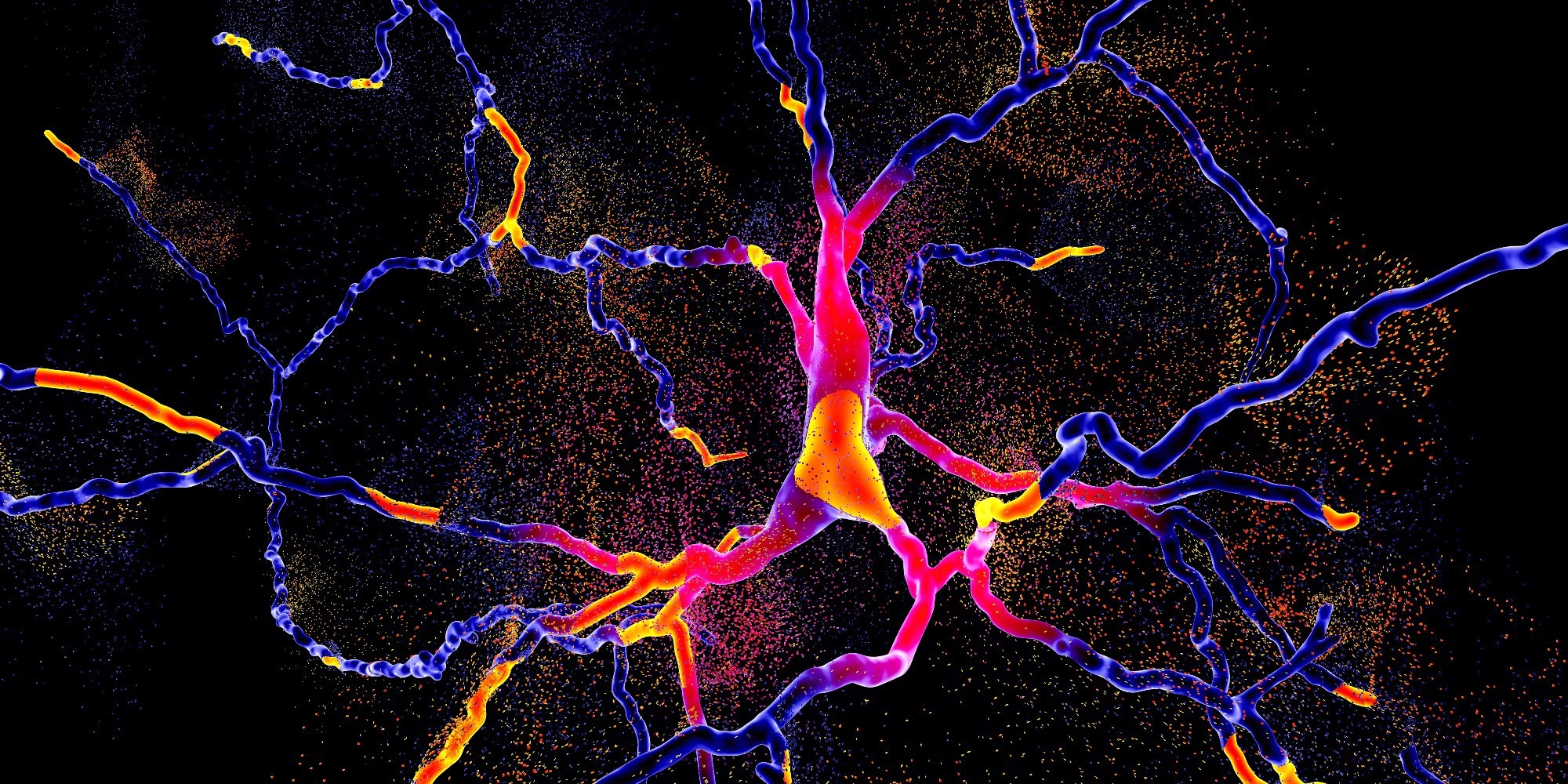
Unveiling the role of astrocyte-derived LCN2 in neurodegenerative disease progression
In a recent review published in Experimental & Molecular Medicine, researchers reviewed existing data on the neurodegenerative effects of astrocyte-derived lipocalin-2 (LCN-2).
 Study: Lipocalin-2: a therapeutic target to overcome neurodegenerative diseases by regulating reactive astrogliosis. Image Credit: Kateryna Kon/Shutterstock.com
Study: Lipocalin-2: a therapeutic target to overcome neurodegenerative diseases by regulating reactive astrogliosis. Image Credit: Kateryna Kon/Shutterstock.com
Background
Reactive astrocytes are important players in brain aging and neurodegenerative disorders. They produce LCN-2, a neurotoxin that accumulates in glial cells and activates the nuclear factor kappa B (NF-κB) pathway.
Researchers are investigating methods to inhibit LCN-2 production and function, including regulation and blockage. Activating autophagy could be a viable therapeutic method for lowering LCN-2 levels and overcoming neurodegenerative disorders.
About the review
In the present review, researchers reported LCN-2 as a target for neuroprotective research.
Reactive astrogliosis and LCN-2 inhibition
Reactive astrogliosis or astrocyte activation is linked to the development of certain neurodegenerative disorders. Reactive astrogliosis induces neuroinflammation before dementia symptom onset and neurodegeneration in Alzheimer's disease.
Reactive-type astrocytes are of two types, A1 and A2, with distinct transcriptome profiles. The proinflammatory A1 type is distinguished by increased pro-LCN-2 expression, whereas low levels of LCN-2 expression distinguish the anti-inflammatory A2 type.
The NF-κB pathway is activated in A1 astrocytes, resulting in the release of proinflammatory cytokine molecules such as tumor necrosis factor-alpha (TNF-α), interleukin-1 beta (IL-1), and interferon-gamma (IFN-γ), and neurotoxins like LCN-2, leading to neuroinflammation and the death of neuronal cells.
In contrast, Janus kinase/signal transducer and activator of transcription 3 (JAK/STAT3) activation is associated with the A2 type, promoting anti-inflammatory cytokine release, including TGF-β and IL-10, and neurotrophic factors, including vascular endothelial growth factor (VEGF) and brain-derived neurotrophic factor (BDNF), that exert neuroprotective effects.
IFN regulatory factor 3 (IRF3) can convert the proinflammatory A1 astrocytes to A2 astrocytes. This might be a potential treatment method for neurodegenerative illnesses.
LCN-2 expression is increased under inflammatory stress conditions through NF-κB activation. Numerous techniques for overcoming neurodegeneration and mitigating the neurotoxic implications of LCN-2 have been presented.
Astrocytes, the most numerous glial cells in the central nervous system, develop from neural progenitors and undergo differentiation and maturation predominantly after birth.
They perform various functions to ensure proper brain function, including structural support, modulation of neurotransmitter activity, regulation of extracellular ion balance, participation in blood-brain barrier (BBB) regulation, and support of metabolic processes to support neuronal health and function.
Glial scarring is a well-known cause of glial scarring, characterized by morphological alterations in local lesions defined by intense overlapping processes.
Glial scars caused by reactive astrogliosis operate as barriers to prevent local immune cells and infectious agents from infiltrating CNS lesions and shield undamaged neurons from adjacent severe inflammatory responses.
GFAP, a component of intermediate filaments in CNS cells, has been widely employed as a molecular marker of astrocytes in normal and pathological situations.
LCN2, reactive astrogliosis, aging, and neurodegenerative disorders
Reactive astrogliosis is a disorder in which astrocytes become activated, resulting in neurodegeneration and GFAP overexpression. This is related to proteostasis loss and disrupted intercellular communication, which leads to neurodegeneration and reactive astrogliosis.
The activation pattern seen in the early stages of neurodegenerative illnesses is intimately tied to glial cells, which maintain neurons, manage development, and participate in synapse formation.
The LCN-2 neurotoxin, upon release by activated astrocytes, induces the death of neuronal cells; therefore, astrocyte activation occurs before neurodegeneration. Regulation of astrocyte activation might be a game-changing treatment technique for slowing the course of neurodegenerative disorders.
The overexpression of LCN-2 or the delivery of recombinant LCN-2 proteins to astrocytes causes activation, GFAP overexpression, and morphological alterations.
LCN-2 is also involved in the neuroinflammation and neurotoxicity caused by lipopolysaccharide (LPS). Glial cell activation by inflammatory stressors, such as lipopolysaccharide (LPS) administration, is comparable to neurodegenerative disorders.
Activated microglia secrete increased amounts of LCN-2 and increase their susceptibility to nitric oxide (NO)-induced apoptosis. Additionally, activated microglial cells can stimulate proinflammatory cytokine secretion following astrocyte activation.
LPS-induced astrocyte activation requires communication between microglia and astrocytes. NF-κB is the main regulator, increasing LCN-2 expression, and is significantly stronger among glial cells than neurons. LCN-2 produced by active astrocytes interacts with the astrocyte LCN-2 receptor 24p3R, inducing morphological alterations.
Autophagy increases LCN-2 breakdown, and low levels of free ubiquitin (Ub) are linked to the initiation and development of neurodegenerative disorders, astrocyte activation, and neuronal cell damage.
Based on the review findings, neurodegenerative diseases can be efficiently controlled by targeting astrocytes, which are important for neuroprotective effects. In neuroinflammatory situations, astrocytes can become reactive, producing the LCN-2 neurotoxin.
Researchers can transform active astrocytes into the neuroprotective A2 subtype, avoiding neuronal cell damage, by lowering LCN-2 levels.
Rather than directly targeting neurons, this technique provides a more effective means of combating neurodegeneration. Further research is required to comprehend LCN-2 breakdown and secretion control fully.
-
Jung, BK., Ryu, KY. (2023) Lipocalin-2: a therapeutic target to overcome neurodegenerative diseases by regulating reactive astrogliosis. Exp Mol Med. doi: https://doi.org/10.1038/s12276-023-01098-7. https://www.nature.com/articles/s12276-023-01098-7
Posted in: Medical Science News | Medical Research News | Medical Condition News
Tags: Aging, Alzheimer's Disease, Anti-Inflammatory, Apoptosis, Astrocyte, Autophagy, Blood, Brain, Cell, Central Nervous System, Cytokine, Dementia, Glial Cell, Growth Factor, Interferon, Interferon-gamma, Interleukin, Ion, Kinase, Medicine, Microglia, Necrosis, Nervous System, Neurodegeneration, Neurodegenerative Disease, Neurodegenerative Diseases, Neurons, Nitric Oxide, Proteostasis, Receptor, Research, Stress, Synapse, Transcription, Tumor, Tumor Necrosis Factor, Ubiquitin, Vascular, VEGF

Written by
Pooja Toshniwal Paharia
Dr. based clinical-radiological diagnosis and management of oral lesions and conditions and associated maxillofacial disorders.